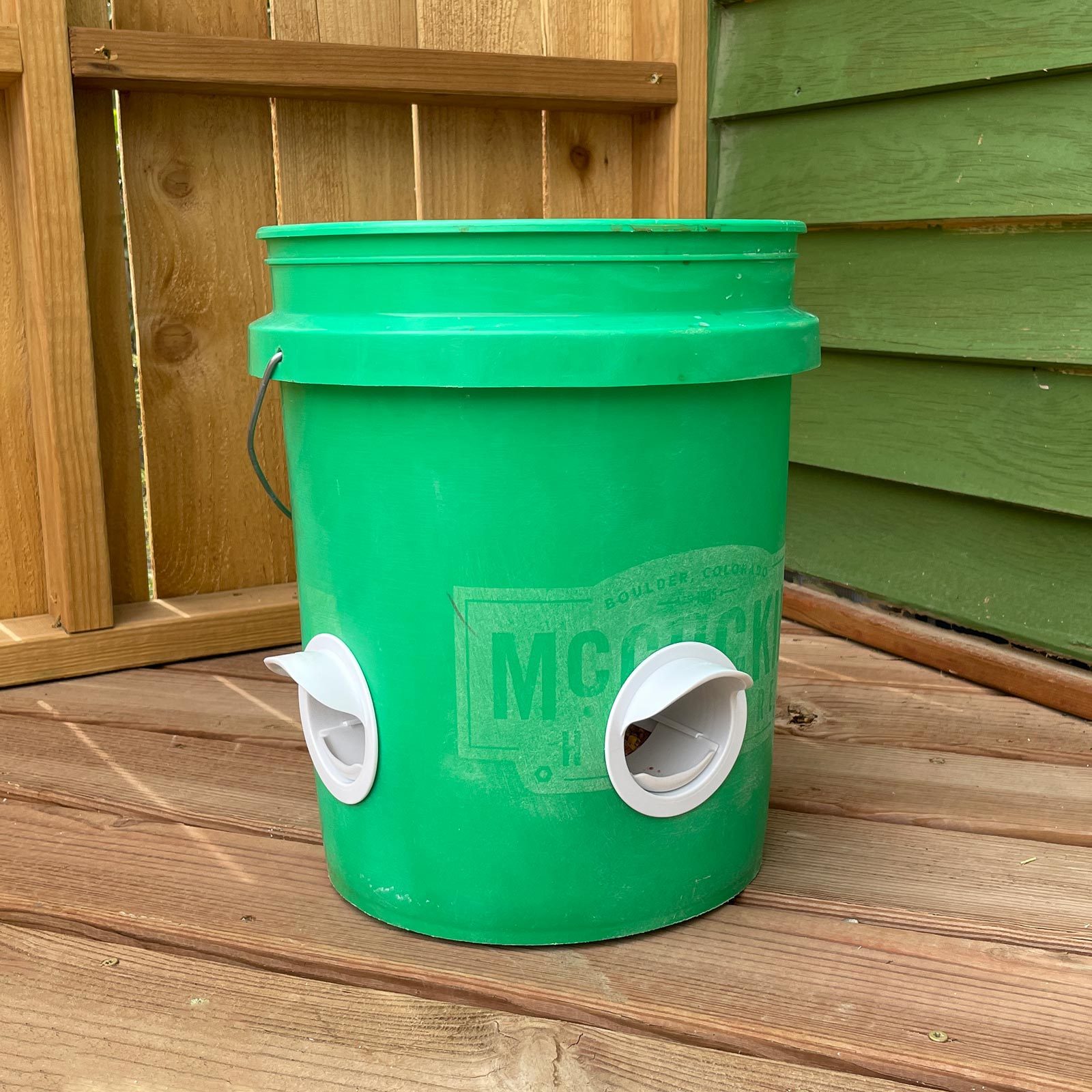Introduction
Fresh eggs are divine, but other elements of raising chickens are a bit more of a hassle. Chickens tend to kick and scratch at their feed, scattering it all over the ground. This attracts rodents, smells bad and wastes a lot of food because it inevitably gets mucked up with dirt, chicken poo and mold.
No-waste chicken feeders solve this problem. And, as an added benefit, no-waste chicken feeders also help ensure your chickens have food whenever they want it. All together, that makes for some happy, healthy chickens.
Here is one of the easiest and most affordable ways to make a no-waste chicken feeder.
Bonus: Here's how to build your own chicken coop.
 Karuna Eberl for Family Handyman
Karuna Eberl for Family Handyman
Materials Required
- 4 chicken feeder ports
- 5-gallon bucket with lid
- Chicken feed
- Piece of sandpaper





























